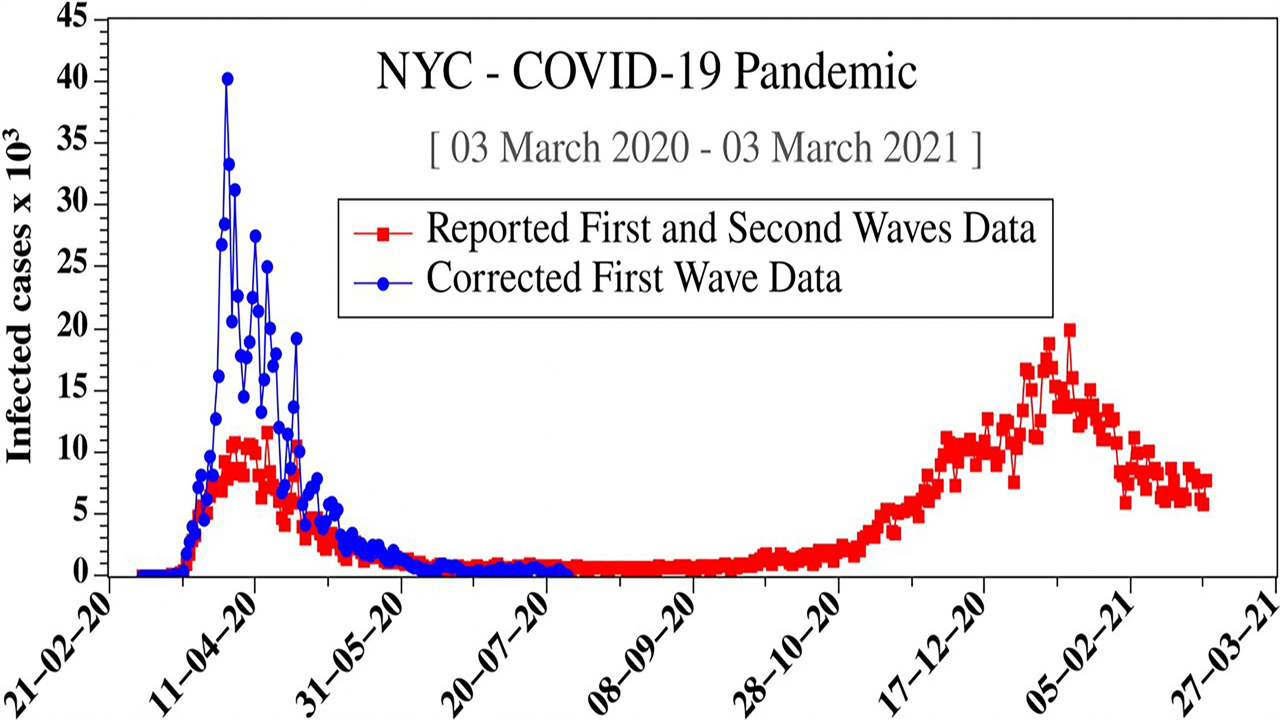First Wave COVID-19 Data Underestimated Pandemic Infections
0 View
Share this Video
- Publish Date:
- 24 June, 2021
- Category:
- Covid
- Video License
- Standard License
- Imported From:
- Youtube
Tags

New York City COVID-19 data, with reported first and second wave data and corrected first wave data. Credit: Talib Dbouk and Dimitris Drikakis
Advanced uncertainty quantification model based on fluid dynamics simulations of weather effects corrects the inaccuracies of the first wave data from the COVID-19 pandemic.
During the one-year period from March 2020 to March 2021, two COVID-19 pandemic curves emerged in many cities.
Curiously, the total number of daily deaths reported during the first wave is much lower than that of the second, but the total number of daily deaths reported during the first wave is much higher than the second.
This contradiction inspired researchers from the University of Nicosia in Cyprus to examine the uncertainty in the daily number of reported infections during the first wave caused by insufficient contact tracing between March and April 2020.
In Physics of Fluids, from AIP Publishing, Talib Dbouk and Dimitris Drikakis report using environmental fluid dynamics – advanced computational multiscale multiphysics modeling and simulations – to develop a constitutive relationship between weather conditions, such as temperature, relative humidity and wind speed, and with two pandemic curves per year.
“We integrated a novel physics-based relationship into a pandemic prediction model that accurately predicted, as was later observed, a second pandemic wave of COVID-19 in many cities around the world, including New York,” Drikakis said.
Most, if not all, data on the daily number of new infections reported during the first wave of the pandemic was underestimated and misused.
“Within New York City, our work shows that the daily number of new infections reported during the first wave was underestimated by a factor of four,” Dbouk said. “So the uncertainty of first wave data mixed with second wave data means that the general conclusions drawn can be misleading, and everyone should be aware of this.”
The researchers’ work is the first known case of deriving an advanced uncertainty quantification model for the infected cases of the first wave of the pandemic based on fluid dynamics simulations of weather effects.
“Our model is based on physics and can correct imperfections in the first wave data by leveraging the adequacy of the second wave data within a pandemic curve,” Drikakis said. “Our proposed approach combines a weather-seasonal virus transmission rate with pandemic multiwave phenomena to improve the data accuracy of statistical predictions.”
In the future, the uncertainty quantification model proposed by the researchers could help correct the global total number of daily coronavirus infections reported by many cities during the first wave of a pandemic.
Reference: “Correction of pandemic data analysis through environmental fluid dynamics” by Talib Dbouk and Dimitris Drikakis, June 22, 2021, Physics of Fluids.
DOI: 10.1063/5.0055299










